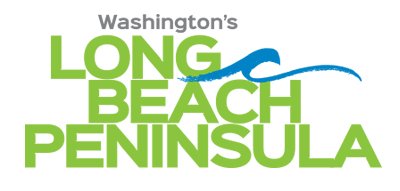Visit Long Beach Peninsula shifts resources to destination management with goal of making communities more resilient and tourism growth more sustainable
SEAVIEW, Wash. – May 18, 2021 – The Pacific County Tourism Bureau (dba Visit Long Beach Peninsula) is applying lessons learned during the pandemic to redirect an increased portion of its resources to destination management and tourism development. The shift is being made to help the rural communities and the businesses it represents be more resilient to future crises and to continue to make tourism growth in this sought-out beach destination sustainable.
“Quality of life for residents and quality of experience for our visitors are both top priorities,” said Andi Day, executive director, Pacific County Tourism, the destination management organization (DMO) for Washington’s Long Beach Peninsula and Pacific County. “The challenges that have surfaced since March 2020 have both affirmed the sustainable tourism path we’ve been pursuing and signaled a need for increased focus on managing the future tourism growth of our region.”
One of the key sustainability undertakings in the past year has been adding a feature to the destination’s website VisitLongBeachPeninsula.com that allows visitors to book rooms directly. The service is funded by a tax collected on overnight stays rather than by charging the participating lodging businesses.
Day and the organization’s board of directors recognized the syphoning of its hospitality partners’ dollars to out-of-area corporations and destinations as injurious to the area’s economic welfare.
“Our online direct booking feature has the potential of keeping millions of dollars currently being paid in fees and commissions to OTAs [online travel agencies] in our county’s economy and with our lodging owners, most of whom live here,” Day said. “These dollars are critical to supporting family wage jobs and the ongoing vibrancy of our communities.”
The ability to book directly from the DMO’s website also addresses the common and troubling practice by OTAs of directing potential visitors to out-of-area lodging properties that pay a premium for enhanced listings. These listings are known to steer travelers to an entirely different destination.
Pacific County Tourism is also making strides to shape tourism’s sustainability into the future. Examples include the following:
- Encouraging and supporting dispersed-model festivals and events, especially multi-day events scheduled in the less busy visitor seasons and ones that attract sought-out audiences without tapping out community and volunteer resources;
- Touting sustainable practices and projects in the region including the revitalization of the Chinook fish hatchery (the state’s first hatchery); the development by the City of Long Beach of a biosolids treatment program; diversification of fishing charters offered out of Ilwaco; and the creation of a designated community forest by the City of Ilwaco at Bear Ridge to protect the city’s watershed and the land surrounding it, to name a few;
- Marketing 365-days-a-year attractions accessible to residents and visitors alike such as Discovery Trail, a newly designated National Recreational Trail, to encourage visits in all seasons and support hospitality partners in providing year-round employment;
- Filling essential needs during a crisis, including the ongoing pandemic, by serving as a communications hub and by connecting tourism industry partners with safe-practices programs and funding resources so that they might weather the crisis intact;
- Facilitating communications with consistent, values-forward messaging and branding to support various community sectors and bridge the gap between residents and visitors, government and businesses.
Looking ahead and considering the growing popularity of the destination with visitors, striking a balance between economic resiliency and the inherent beauty of the region and its livability is foremost.
To this end, the organization in addition to shifting from destination marketing to destination management has added a position for a project coordinator focused on tourism development. Once onboard, the project coordinator will be tasked with implementing strategies previously identified by the board, staff and stakeholders that fall beyond the scope of an annual marketing and promotion plan. Projects that are designed to expand and improve product, increase positive impact of marketing and industry, and enhance quality of life for locals will be given highest priority.
Like destinations worldwide, Pacific County became acutely aware of its economic dependence on tourism when hotels and the beach shut down for six weeks in spring 2020. While hotels reopened in stages once Covid-safe protocols were in place, it continues to be a bumpier ride for restaurants and other tourism-dependent businesses.
“Pacific County’s DMO quickly shifted its energies from marketing to management by convening industry partners, implementing a crisis response plan and then following with an industry recovery plan to help guide local tourism,” said Sue Yirku, executive director, Pacific County Economic Development Council. “The good work of Pacific County Tourism, its key partners and allies is making a difference in our region’s work toward a rapid recovery.
“We are stronger, better informed and more connected as we navigate our way through 2021 and beyond.”
Over half of every taxable dollar spent in Pacific County is spent by a visitor. Yet, the rural, tourism-dependent county was able to come through 2020 with only a 2 to 4% downturn in visitor spending while, at the same time, maintaining low Covid case counts.
“This is an incredible accomplishment and a testimony to what rural communities can accomplish when they all work together,” said Day.
